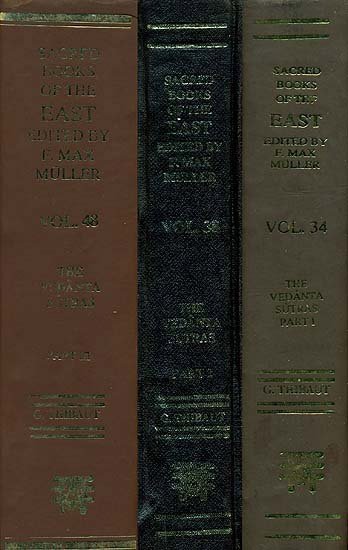Brahma Sutras (Ramanuja)
by George Thibaut | 1904 | 275,953 words | ISBN-10: 8120801350 | ISBN-13: 9788120801356
The English translation of the Brahma Sutras (also, Vedanta Sutras) with commentary by Ramanuja (known as the Sri Bhasya). The Brahmasutra expounds the essential philosophy of the Upanishads which, primarily revolving around the knowledge of Brahman and Atman, represents the foundation of Vedanta. Ramanjua’s interpretation of these sutras from a V...
Sutra 3.2.19
19. But because it is not apprehended like water, there is no equality.
The 'but' indicates an objection.—The highest Self is not apprehended in earth and other places in the same way as the sun or a face is apprehended in water or a mirror. For the sun and a face are erroneously apprehended as abiding in water or a mirror; they do not really abide there. When, on the other hand, Scripture tells us that the highest Self dwells in the earth, in water, in the soul, etc., we apprehend it as really dwelling in all those places. That the imperfections caused by water and mirrors do not attach themselves to the sun or a face is due to the fact that the sun and the face do not really abide in the water and the mirror. Hence there is no real parallelism between the thing compared (the highest Self) and the thing to which it is compared (the reflected image).
